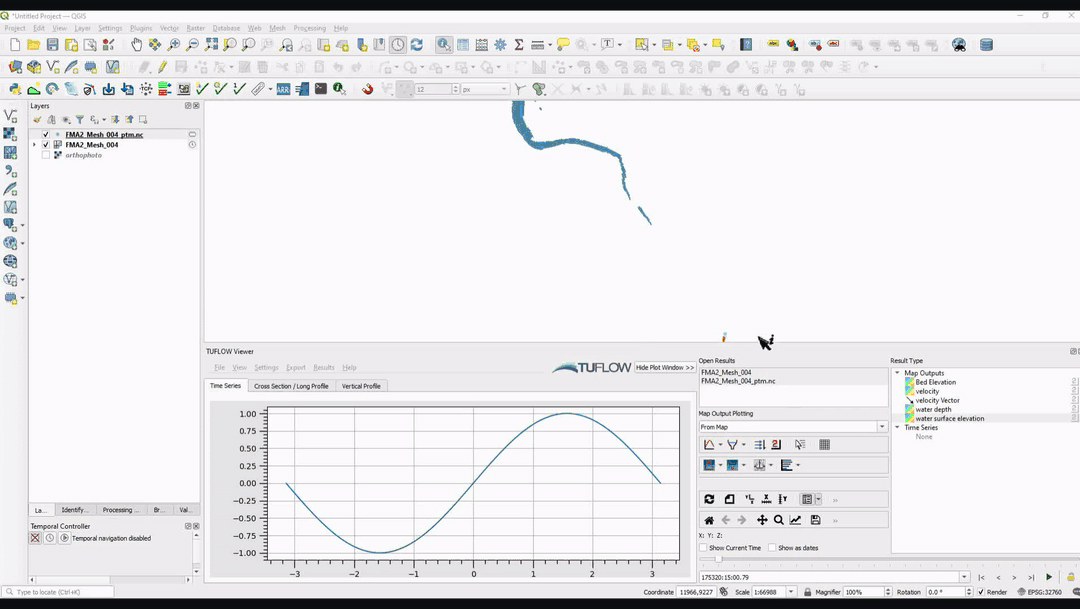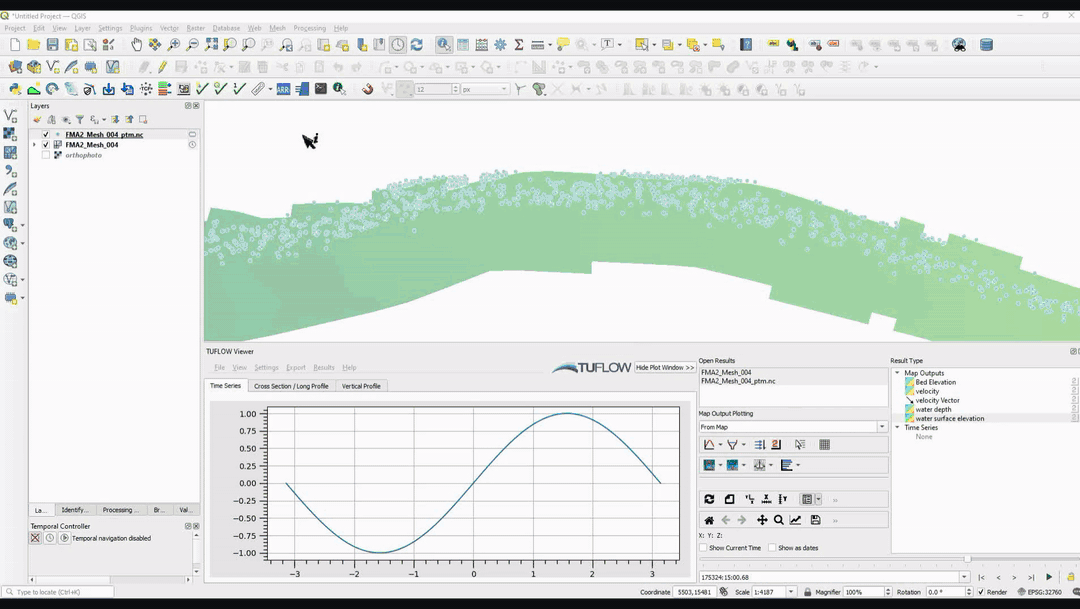TUFLOW Viewer - Particle Outputs: Difference between revisions
Ellis Symons (talk | contribs) |
|||
| Line 1: | Line 1: | ||
===Tool Description=== |
===Tool Description=== |
||
Outputs from the |
Outputs from the Particle Tracking (PT) Module ('''*_ptm.nc''') can be loaded into TUFLOW Viewer and viewed along side the hydrodynamic results. The results are displayed as a point vector layer and each particle contains result information depending on the chosen simulation output options (e.g. mass, depth). The vector layer is stored in memory (RAM) and the GIS point layer will be deleted if the results are closed or QGIS is closed. Any given timestep can be saved to disk by right clicking the layer in the Layers Panel and selected "Export >> Save Features As". |
||
TUFLOW Viewer loads a set of pre-defined styling for displaying the particle results based on a number of different attributes that user can switch between easily. These include: |
TUFLOW Viewer loads a set of pre-defined styling for displaying the particle results based on a number of different attributes that user can switch between easily. These include: |
||
* Particle age |
* Particle age |
||
* |
* Particle depth |
||
* Particle group |
* Particle group |
||
* Particle mass |
* Particle mass |
||
* Particle status |
* Particle status |
||
To select or change the styling, right click the layer in the Layers Panel and select "Styles" and select one of the pre-defined style options. The user can tweak one of the existing styles or use a style of their own making by the standard approach of changing vector layer symbology in QGIS. |
To select or change the styling, right click the layer in the Layers Panel and select "Styles" and select one of the pre-defined style options. The user can tweak one of the existing styles or use a style of their own making by the standard approach of changing vector layer symbology in QGIS. |
||
===Examples=== |
===Examples=== |
||
[[File: Particles_Timestepping.gif]]<br> |
[[File: Particles_Timestepping.gif]]<br> |
||
Revision as of 11:38, 24 May 2021
Tool Description
Outputs from the Particle Tracking (PT) Module (*_ptm.nc) can be loaded into TUFLOW Viewer and viewed along side the hydrodynamic results. The results are displayed as a point vector layer and each particle contains result information depending on the chosen simulation output options (e.g. mass, depth). The vector layer is stored in memory (RAM) and the GIS point layer will be deleted if the results are closed or QGIS is closed. Any given timestep can be saved to disk by right clicking the layer in the Layers Panel and selected "Export >> Save Features As".
TUFLOW Viewer loads a set of pre-defined styling for displaying the particle results based on a number of different attributes that user can switch between easily. These include:
- Particle age
- Particle depth
- Particle group
- Particle mass
- Particle status
To select or change the styling, right click the layer in the Layers Panel and select "Styles" and select one of the pre-defined style options. The user can tweak one of the existing styles or use a style of their own making by the standard approach of changing vector layer symbology in QGIS.

